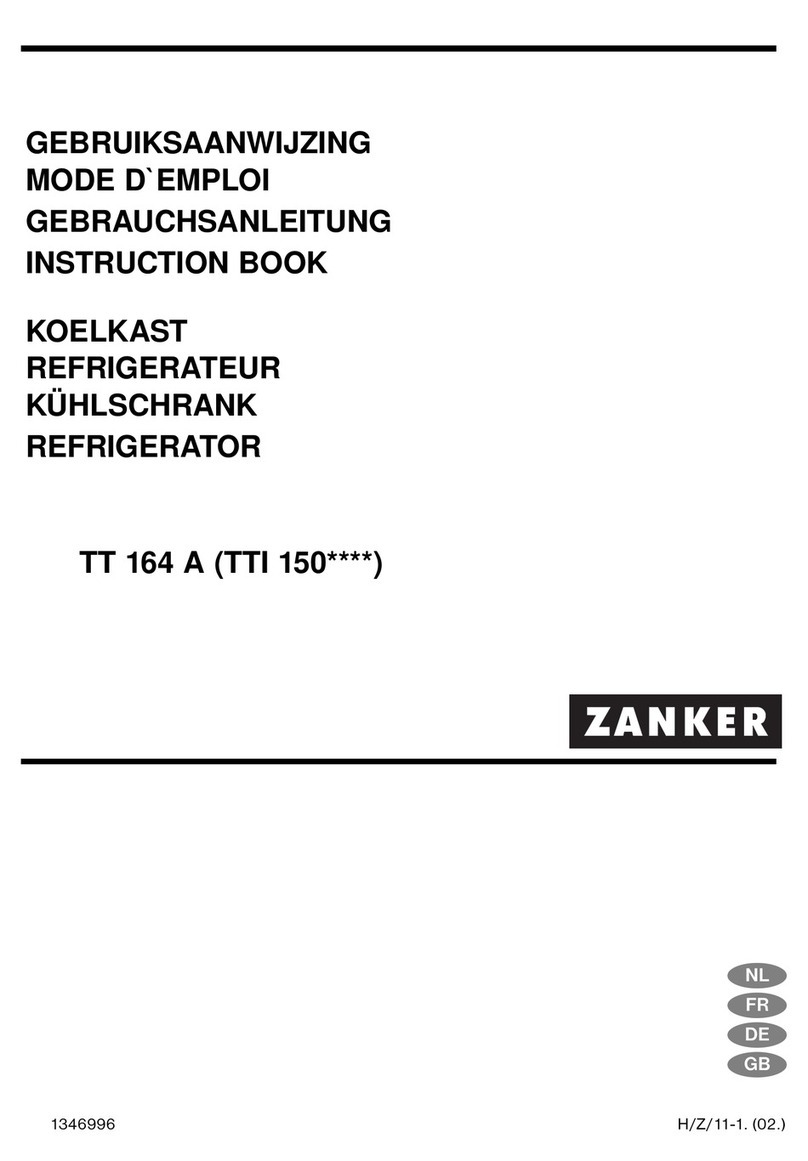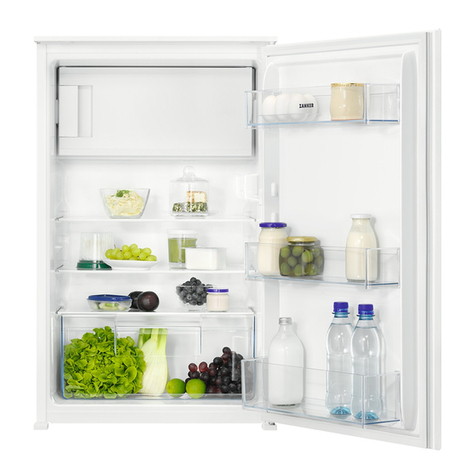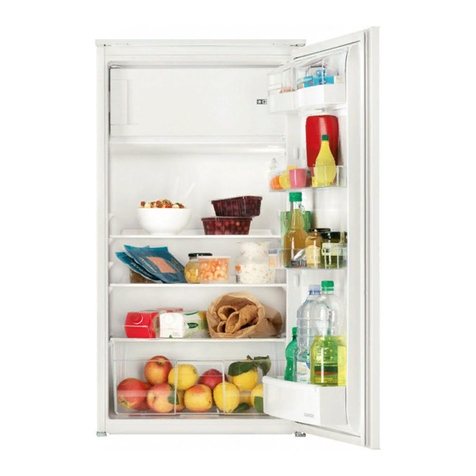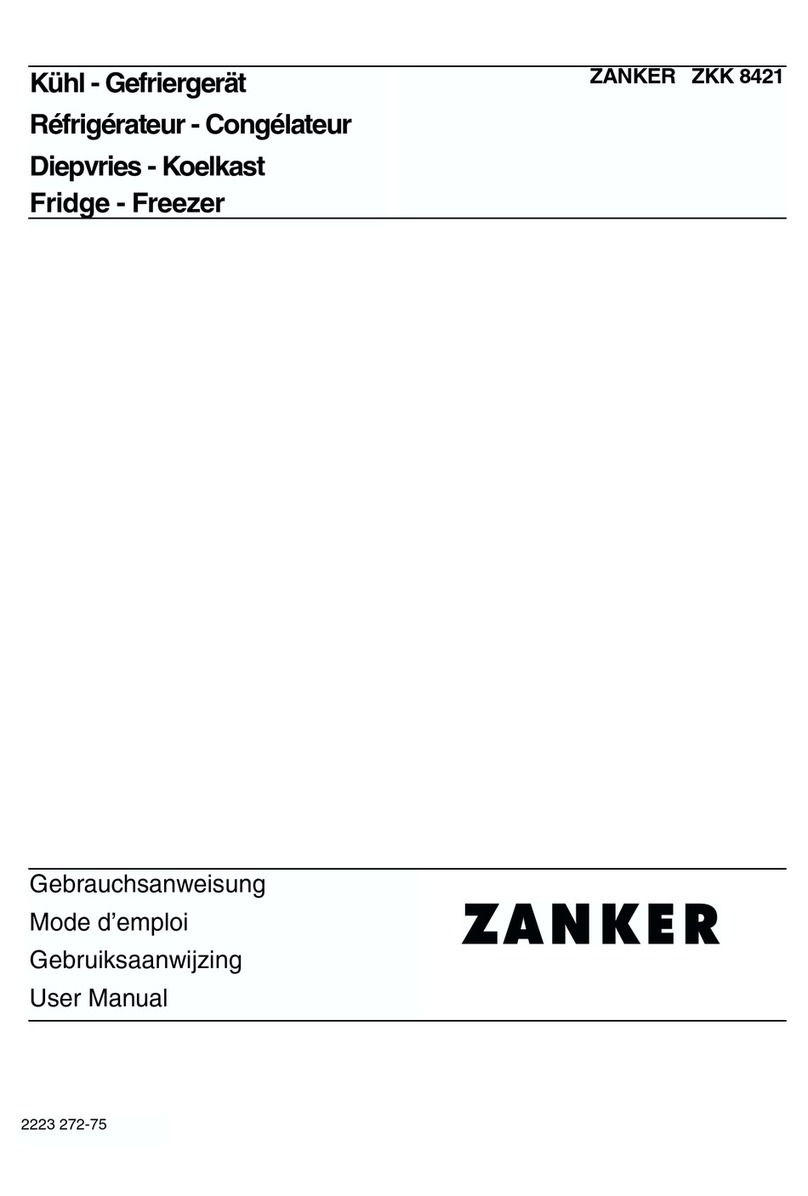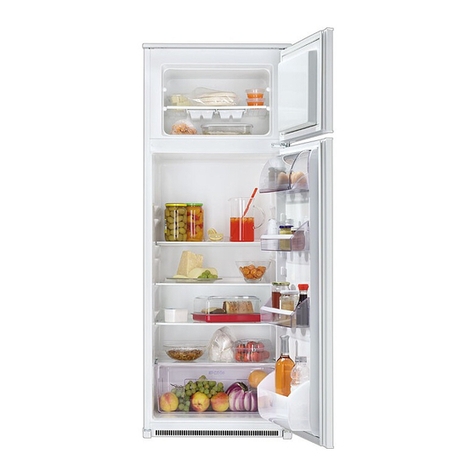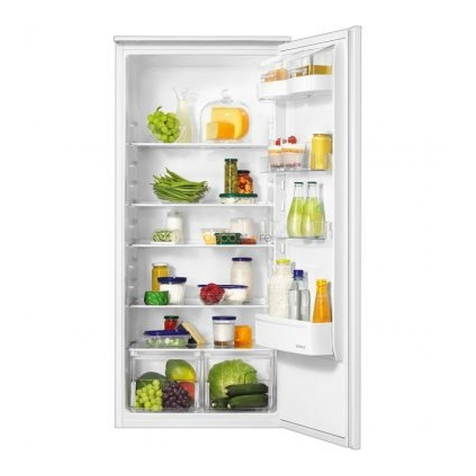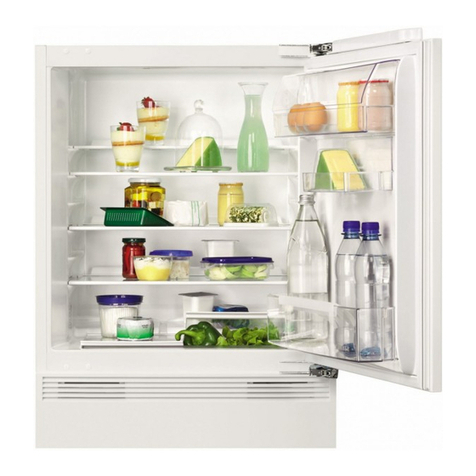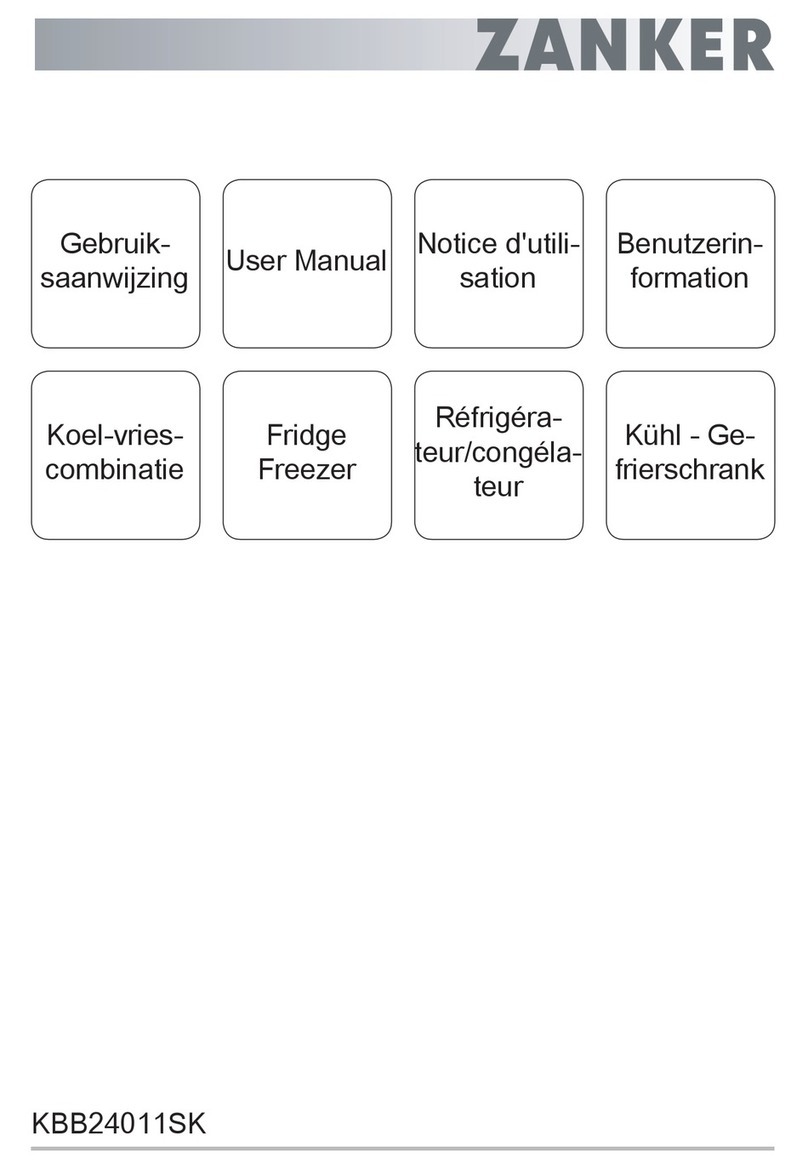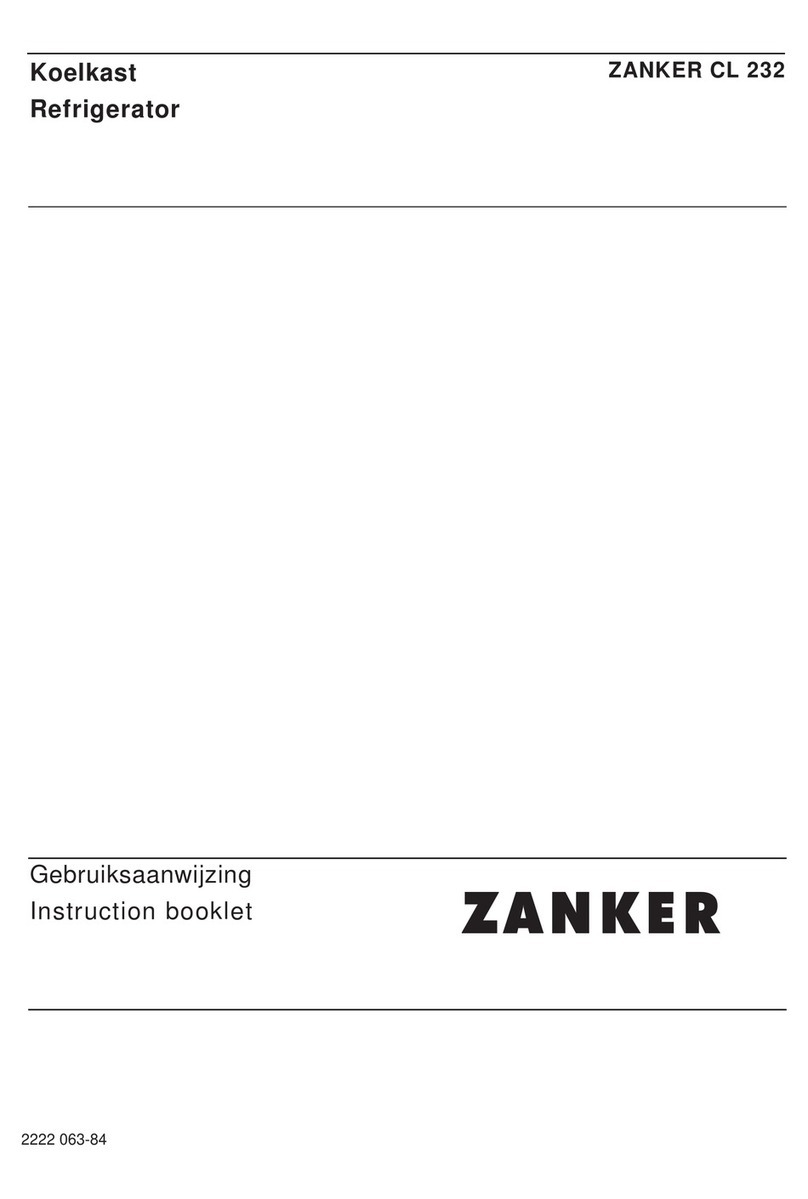
Nuttige aanwijzingen en tips
Normale bedrijfsgeluiden
• U kunt een zwak gorgelend en borrelend geluid ho-
ren wanneer het koelmiddel door leidingen wordt ge-
pompt. Dat is normaal.
• Als de compressor aan staat, wordt het koelmiddel
rondgepompt en dan zult u een zoemend en klop-
pend geluid van de compressor horen. Dat is nor-
maal.
• De thermische uitzetting kan een plotseling krakend
geluid veroorzaken. Dit is een natuurlijk, niet gevaar-
lijk fysisch verschijnsel. Dat is normaal.
• Als de compressor in- of uitgeschakeld wordt, zult u
een zacht "klikje" van de thermostaat horen. Dat is
normaal.
Tips voor energiebesparing
• De deur niet vaker openen of open laten staan dan
strikt noodzakelijk.
• Als de omgevingstemperatuur hoog is, de thermo-
staatknop op een lage temperatuur staat en het ap-
paraat volledig gevuld is, kan de compressor continu
aan staan waardoor er ijs op de verdamper ontstaat.
Als dit gebeurt, zet u de thermostaatknop naar een
warmere instelling om de koelkast automatisch te la-
ten ontdooien en zo elektriciteitsverbruik te besparen.
Tips voor het koelen van vers voedsel
Om de beste prestatie te verkrijgen:
• Zet geen warm voedsel of verdampende vloeistoffen
in de koelkast
• dek het voedsel af of verpak het, in het bijzonder als
het een sterke geur heeft
• plaats het voedsel zodanig dat de lucht er vrijelijk
omheen kan circuleren
Nuttige tips voor het koelen
Nuttige tips:
Vlees (alle soorten) in plastic zakken verpakken en op
het glazen schap leggen, boven de groentelade.
Bewaar het, voor de veiligheid, slechts een of maximaal
twee dagen op deze manier.
Gekookt voedsel, koude schotels, enz: deze moeten af-
gedekt worden en mogen op willekeurig welk schap ge-
zet worden.
Fruit en groente: deze moeten zorgvuldig schoonge-
maakt worden en in de speciaal daarvoor bedoelde la-
de(n) geplaatst worden. Citroensap kan de plastic delen
van de koelkast verkleuren. Daarom wordt aangeraden
om citrusvruchten in aparte bakjes te bewaren.
Boter en kaas: dit moet in speciale luchtdichte bakjes
gelegd of in aluminiumfolie of plastic zakjes gewikkeld
worden om zoveel mogelijk lucht buiten te sluiten.
Flessen: deze moeten een afdekdop hebben en opge-
slagen worden in het flessenrek in de deur.
Bananen, aardappelen, uien en knoflook, indien niet
verpakt, mogen niet in de koelkast bewaard worden.
Tips voor het invriezen
Om u te helpen om het beste van het invriesproces te
maken, volgen hier een paar belangrijke tips:
• de maximale hoeveelheid voedsel die in 24 uur inge-
vroren kan worden. is vermeld op het typeplaatje;
• het invriesproces duurt 24 uur. Voeg gedurende deze
periode niet meer in te vriezen voedsel toe;
• vries alleen vers en grondig schoongemaakte levens-
middelen van uitstekende kwaliteit in;
• bereid het voedsel in kleine porties voor, zo kan het
snel en volledig worden ingevroren en zo kunt u later
alleen die hoeveelheid laten ontdooien die u nodig
heeft;
• wikkel het voedsel in aluminiumfolie of plastic en zorg
ervoor dat de pakjes luchtdicht zijn;
• leg vers, nog niet ingevroren voedsel niet tegen het
al ingevroren voedsel, om te voorkomen dat dit laat-
ste warm wordt;
• smalle pakjes zijn makkelijker op te bergen dan dik-
ke; zout maakt voedsel minder lang houdbaar;
• water bevriest, als dit rechtstreeks uit het vriesvak
geconsumeerd wordt, kan het aan de huid vastvrie-
zen;
• het is aan te bevelen de invriesdatum op elk pakje te
vermelden, dan kunt u zien hoe lang het al bewaard
is;
Tips voor het bewaren van ingevroren voedsel
Om de beste resultaten van dit apparaat te verkrijgen,
dient u:
• verzeker u ervan dat de commercieel ingevroren le-
vensmiddelen op geschikte wijze door de detailhan-
delaar werden opgeslagen;
6



